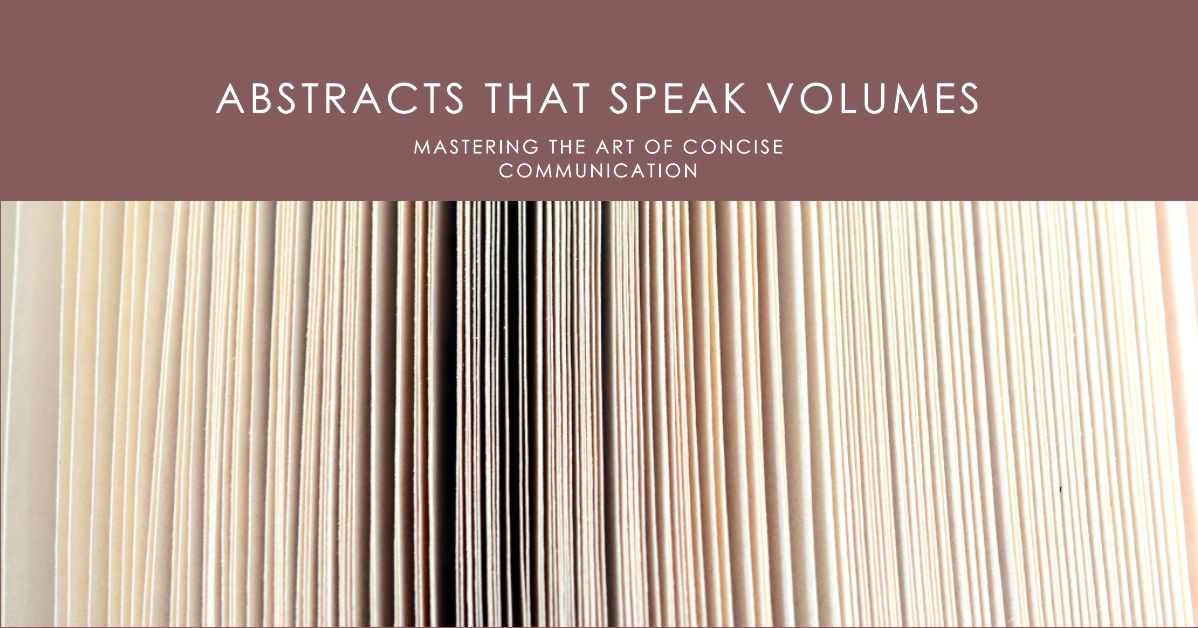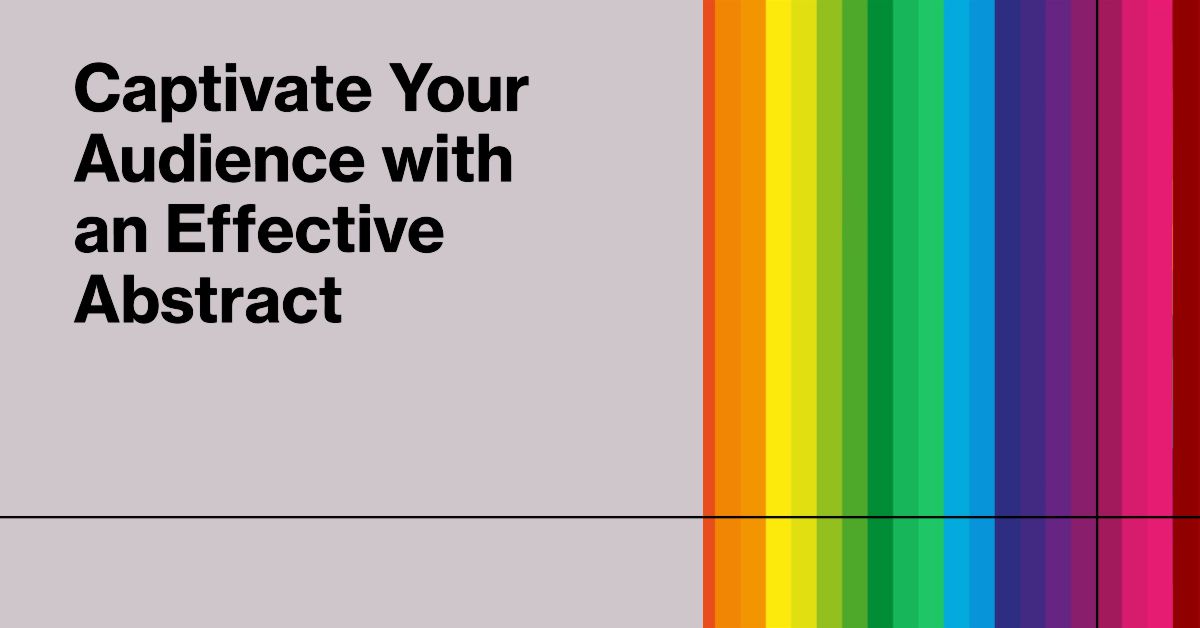The abstract of a scientific article is a summary that provides an overview of the study’s purpose, methods, key findings, and implications. Usually, it is 150-300 words of text that serve as a concise representation of the entire article, allowing readers to quickly assess the relevance and significance of the research without needing to read the entire paper.
The abstract is the only part of the paper that a potential reviewer reads when he is invited to review a manuscript. The abstract, perhaps, is the only thing readers see when searching for a certain topic. In addition, the abstract is an essential component of a scientific article, serving as a gateway to the research and facilitating the dissemination and discovery of new knowledge in the scientific community.
It is proved that most readers look only at the titles of the papers. If a title interests them, they glance through the abstract of that paper. Only a reader with a specific interest in the field will read the paper. Even fewer researchers will communicate, discuss or cite your article.
Thus, for the vast majority of readers, the paper does not exist beyond its abstract. For the reviewers, the abstract draws that vision of the whole article. Therefore, an author must represent his research properly, writing an effective abstract since a well-written abstract helps them quickly assess the quality, significance, and novelty of the research, aiding in the selection process.
Structure of a good abstract
As a rule, the abstract of a scientific paper contains four components: aim and objectives, methods, results, and implications.
Aim and objectives. When writing the aim and objectives in the abstract of a scientific article, it’s important to convey the purpose and scope of the research clearly. Usually, it is one sentence that provides a clear and concise overview of what the study intends to accomplish, helping readers understand the purpose and scope of the research at a glance.
Methods. Describing the methods in the abstract requires condensing the key aspects of the study’s methodology into an informative summary. This part is used to identify the most important and distinctive methods used in the study that contribute to its unique approach or findings. The author should focus on methods that are critical to achieving the study’s objectives or that are particularly noteworthy. Also, the writer provides a brief overview of the study design, including the research approach, the study sample, and the duration of the study if relevant. In addition, the explanation of key techniques, procedures, or interventions used in the study, may include specific laboratory methods, data collection tools, statistical analyses, or any other essential steps taken to gather and analyze data. To make the text smooth for a reader, avoiding excessive technical details and ensuring coherence with the main article are necessary.
Results require summarizing the key findings in a concise manner. To explain the results effectively, the author should first identify the most significant and relevant findings from the study. Depending on the nature of the study, it is recommended to consider incorporating quantitative information, such as statistical measures or numerical data, to provide a concise summary of the results. The section focuses on major patterns or trends, providing specific examples or illustrative cases. The results must be related to the research objectives or research questions stated in the introduction or aims of the study. This helps to establish the relevance and significance of the findings. Remember, the results section of the abstract should highlight the main patterns or relationships observed in the data. It should persuade the readers to explore the full article for more detailed information about the results and their implications.
Implications. Including the implications in the abstract, the author provides the readers with a glimpse into the potential impact and significance of the study. It helps them understand why the research is important, how it contributes to the field, and what practical applications or theoretical advancements may arise from the findings. Effective implications include the main consequences of the study’s findings and consider how the results contribute to advancing knowledge, addressing gaps in the field, or influencing practical applications. A well-written implications section must be related to the research objectives and establish a clear link between the findings and their broader relevance. The author must highlight practical applications, consider theoretical contributions, and address limitations and future directions.

Language of a good abstract
A good scientific article abstract should adhere to certain language requirements to effectively communicate the key information to readers. Here are some language requirements for a well-written abstract:
Clarity. The language used should be clear and easily understandable. Avoid unnecessary technical jargon or complex terminology that may hinder comprehension, especially for readers outside the specific field of study. Use concise and straightforward sentences to convey the main points.
Accuracy. Ensure that the information provided in the abstract is accurate and reflects the actual findings of the study. Use precise and specific language to describe the research objectives, methods, results, conclusions, and implications.
Objectivity. Maintain an objective tone in the abstract. Present the information in an unbiased manner without personal opinions or subjective interpretations. Stick to the facts and avoid overly promotional language.
Coherence. Maintain coherence and logical flow in the abstract by smoothly connecting the different sections (e.g., objectives, methods, results, conclusions). Use appropriate transition words or phrases to guide the reader through the abstract.
Consistency with the main article. Ensure that the language used in the abstract is consistent with the language and style employed in the full article. The abstract should accurately reflect the content and tone of the main article.
Avoid abbreviations and acronyms. Minimize the use of abbreviations and acronyms in the abstract. If necessary, include them, and ensure they are defined clearly at their first mention to avoid confusion.
Avoid excessive detail. While providing enough information is important, avoid including excessive detail in the abstract. Focus on conveying the main findings and implications succinctly. Reserve the detailed methodology, data analysis, and supporting evidence for the article’s main body.
Verb tenses. Use appropriate verb tenses to describe the research. Typically, the past tense is used to describe the methods and results since they represent completed actions. The present tense is often used for statements of general truths or when referring to the article itself.
Personal pronouns. Generally, it is recommended to avoid using personal pronouns such as “I” or “we” in the abstract. Instead, maintain an objective tone and focus on the research itself.
Avoid citations. Generally, the APA style discourages the inclusion of citations in the abstract. Instead, focus on summarizing the study’s key findings and conclusions without referencing specific sources.
Keywords. Below the abstract, include a list of 3 to 5 keywords or key phrases that represent the main topics or themes of the research. These keywords help indexers and readers find the article in databases.
And remember to consult the specific guidelines provided by the journal or institution you are submitting to, as they may have additional requirements for writing abstracts.

